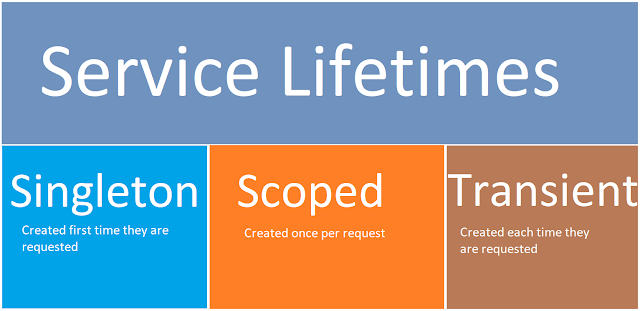Transient services are created each time they are requested. Every time you request an instance of a transient service, a new instance is created. Transient services are good for lightweight, stateless services that can be easily created and destroyed. For example, a Random number generator might be a good candidate for a transient service.
Scoped services are created once per request (i.e., per HTTP request in the case of an ASP.NET Core application). Once a scoped service has been created, it is used for the duration of the request, and then destroyed. Scoped services are useful for stateful services that need to be reused across multiple objects or components during the processing of a single request. For example, a database context might be a good candidate for a scoped service.
Singleton services are created once and reused for the lifetime of the application. A single instance of the service is created when the application starts up and then reused across all requests. Singleton services are good for services that are expensive to create or that hold application-level state. For example, a configuration service that reads configuration settings from a file might be a good candidate for a singleton service.



No comments:
Post a Comment
Please keep your comments relevant.
Comments with external links and adult words will be filtered.